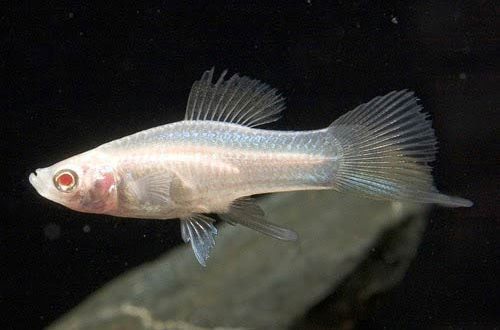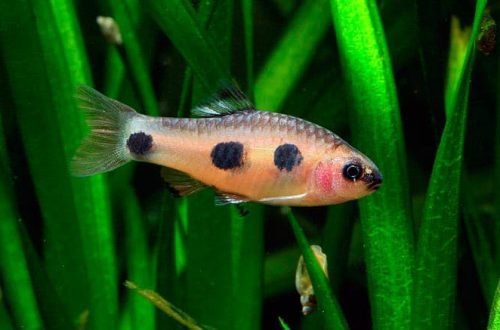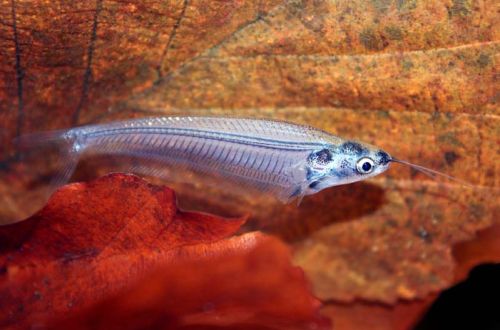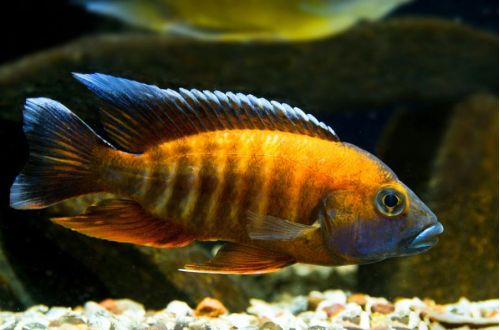
Malawian Butterfly
The Freiberg Aulonocara or Malawian Butterfly, also known as the Fairy Cichlid, scientific name Aulonocara jacobfreibergi, belongs to the Cichlidae family. Endemic to Lake Malawi in East Africa. It is found mainly in its southern part in regions with a sandy bottom interspersed with rocky shores. The fish is easy to keep and breed, and is also compatible with many other species due to its relatively peaceful disposition compared to other Malawian cichlids.

Contents
Description
Adult individuals reach a length of up to 15–17 cm. The body color is orange or yellow, gradually turning into blue on the head and along the edges of the fins and tail. Sexual dimorphism is weakly expressed, males are somewhat larger than females and have brighter colors, especially during the spawning period.
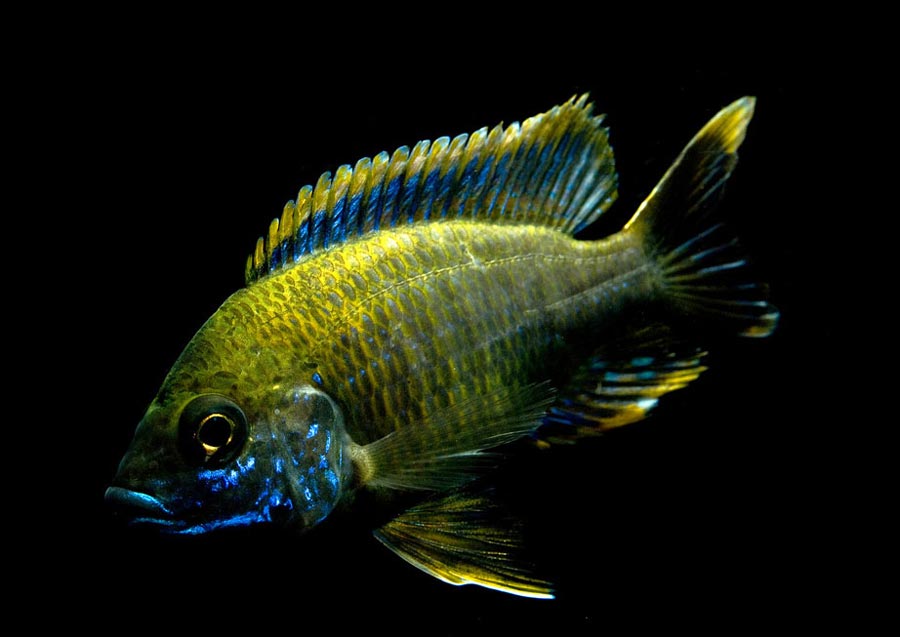
Brief information:
- The volume of the aquarium – from 200 liters.
- Temperature – 25-29°C
- Value pH — 7.6–9.0
- Water hardness – medium to high hardness (10-25 dGH)
- Substrate type – sandy
- Lighting – moderate
- Brackish water – no
- Water movement is weak
- The size of the fish is 9–12 cm.
- Nutrition – any with vegetable and protein supplements
- Temperament – conditionally peaceful
- Keeping in a harem with one male and several females
Food
In nature, they feed at the bottom, sifting portions of the soil with their mouths, thereby straining out small invertebrates, crustaceans, vegetation, etc. In a home aquarium, preference should be given to specialized sinking foods for Malawian cichlids, which contain all the necessary components of plant and protein origin. If necessary, large flakes or granules can be crushed to make them easier for the fish to swallow. Homemade food is not welcome. Feed small meals 3-4 times a day.
Maintenance and care, arrangement of the aquarium
To successfully keep a small group of adult fish, you will need a tank of 300 liters or more. The design uses a sandy substrate, unpretentious plants, for example, Anubias, Vallisneria, Arrowhead styloid, several large stones / rocks, from which caves, grottoes, crevices or other similar decorative elements are formed.
Water conditions have high pH and dGH values. The placement of a productive filtration system, along with a weekly replacement of part of the water with fresh water (15–20% of the volume), will help maintain hydrochemical conditions at the proper level. It is advisable to purchase filters with filter materials that increase the hardness of the water in order to avoid strong fluctuations in dGH.
Behavior and Compatibility
Male Malawian Butterflies are aggressive towards each other and in a small aquarium skirmishes for territory and females are inevitable, in addition, they can attack fish that have a similar color to them. Otherwise, they are quite friendly to representatives of other species. The optimal choice is one male and several females (3-6) in the neighborhood of calm medium-sized fish.
Breeding / breeding
The appearance of offspring in favorable conditions is very likely. With the onset of the mating season, the male chooses a certain area at the bottom of the aquarium – the future spawning site. Then he proceeds to active and very persistent courtship. When the female is ready, she accepts courtship and lays several dozen eggs, which she immediately takes into her mouth. At this moment, the male releases the seed and the eggs are fertilized already in the mouth. He no longer participates in the protection and care of offspring.
The entire incubation period and the first weeks of life, the fry spend in the mouth of the female. At this time, she does not eat anything and can noticeably lose weight. If before spawning the food supply was not regular or the diet was poor, then the female is likely to release the fry earlier, in the worst case, she will eat them.
During spawning, it is advisable to transplant the neighbors in the aquarium into another tank (if any) in order to avoid possible attacks from the male, or vice versa, place cichlids there, and return them back at the end of the mating season.
For the safety of fry in the future, they are kept in a separate aquarium with identical water conditions.
Fish diseases
The main cause of most diseases in Malawian cichlids is inadequate housing conditions and poor quality food, which often leads to such a disease as Malawi bloat. If the first symptoms are detected, you should check the water parameters and the presence of high concentrations of hazardous substances (ammonia, nitrites, nitrates, etc.), if necessary, bring all indicators back to normal and only then proceed with treatment. Read more about symptoms and treatments in the Aquarium Fish Diseases section.



